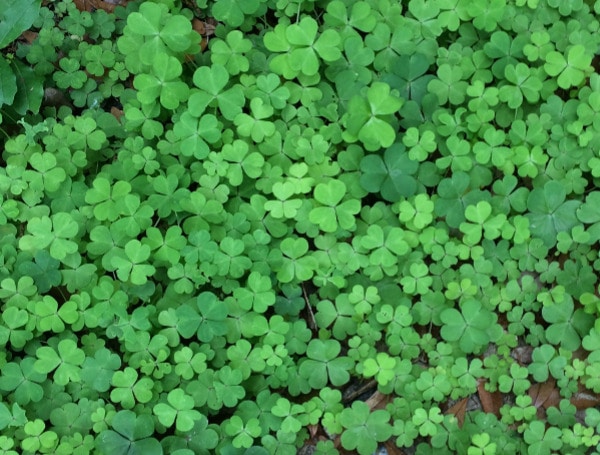Florida residents seeking a dose of luck this St. Patrick’s Day likely won’t find it among the weeds in their backyards.
Although oxalis stricta, a woodsorrel found throughout the state year-round, closely resembles the shamrock, a colloquial name for clover, the two plants are not biologically related, according to University of Florida Institute of Food and Agricultural Sciences (UF/IFAS) researchers.
In fact, oxalis is sometimes referred to as “false shamrock.”
Read: Agritourism In Florida: Exploring The Ultimate Farm Experience And Sunshine State Agriculture
Matthew Lollar, an agent for UF/IFAS Extension Santa Rosa County, has studied oxalis for years, but he’s never come across a four-leaf version of the plant, an anomalous clover feature said to bring good fortune to those who discover it.
Often, oxalis can prove a bit of a pest.
“It’s a native plant, but it’s usually considered a weed in yards and landscapes,” Lollar said.
Oxalis stricta is a low-growing, clumping plant, featuring green, heart-shaped leaflets. In the spring, it develops five-petaled, yellow flowers from three stalks emerging from the main stalk. Okra-shaped pods explosively discharge teardrop-shaped seeds when plants are disturbed.
“When a pod dries, anything it touches or even a strong enough wind will trigger it to open up, and seeds are scattered,” Lollar said.
Read: Florida Citrus Industry Gets Sour Forecast
A single plant is capable of producing up to 5,000 seeds each year. When those seeds germinate, they can produce offspring in undesirable locations.
“It might be unwanted in landscapes, but it can be a big issue in container nurseries,” said Chris Marble, a UF/IFAS associate professor of ornamental and landscape weed management at the Mid-Florida Research and Education Center.
In addition to spreading by seed, oxalis can spread through its underground rhizomes, or root systems. Removing plants by hand is difficult because doing so requires extracting the entire rhizome, a hydra of bulbs that easily break off.
“It’s a perennial, so that’s why you have to go through multiple approaches to control it,” Lollar said.
He recommends combating unwanted oxalis by applying pre-emergent herbicides.
“That way, you’re limiting its germination from seed, and then, eventually, hopefully, getting rid of it,” he said.
If plants are already established, Lollar recommends applying post-emergent herbicides.
Lollar’s property isn’t free of oxalis, but he’s adopted a laissez faire approach to taming it.
“It pops up everywhere in my yard,” he said, adding that his pet ducks like to nibble on it.
Help support the Tampa Free Press by making any small donation by clicking here.
Android Users, Click To Download The Tampa Free Press App And Never Miss A Story. Follow Us On Facebook and Twitter. Sign up for our free newsletter.

